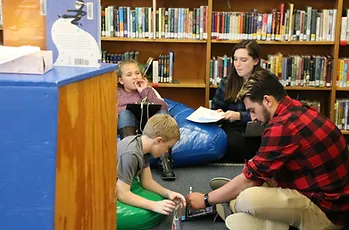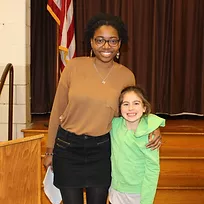The Rural Schools Association of New York






Background
A former K-12 teacher and now teaching professor at Cornell University, Bryan Duff
focuses on youth development, especially in after-school and summer programs. Because
such programs can change youth trajectories, and because they are harder to access in
rural areas, Duff reaches out to rural districts “near” the University each time he teaches a
course. That’s because his courses on educational psychology include off-campus field-
work: a chance for undergrads to use, refine, and add to what they learn on campus.

Program Development
Of course, programs can’t live on sentiment alone. Resources and experience-tested models are needed, and Duff was fortunate in several respects. First, he had residual funds from a grant offered by Cornell’s Office of Engagement Initiatives, which aims to make community engagement a pillar of the University’s curriculum. Second, Groton Elementary already offered late buses for students, allowing Duff’s funding to cover snacks and rental vans for the three
weekly round trips between Cornell and the school. Finally, thanks to the aforementioned grant, Duff had had a chance in Spring 2018 to pilot-test and improve a specific after-school model.

Each college student was paired with an elementary buddy, based partly on information that guardians provided about the child’s interests, strengths, and challenges. For one hour each week, these pairs worked together to write and photo-illustrate a short story. Duff knew (all too well) that his students had phones that take crystal-clear color photos, so there was no additional expense there! He also knew that children’s imaginations likely would take stories in directions that defy photo-realism, so he was glad that he already had a green-screen!

Outcomes
The program served 27 children, ranging from kindergarten to fourth grade.
Enjoy a highlights booklet (one-page excerpts from some of the stories). There’s plenty more where this came from!
Sample feedback from parents and guardians:

For more information:
Bryan Duff
bpd38@cornell.edu
(607) 255-8663